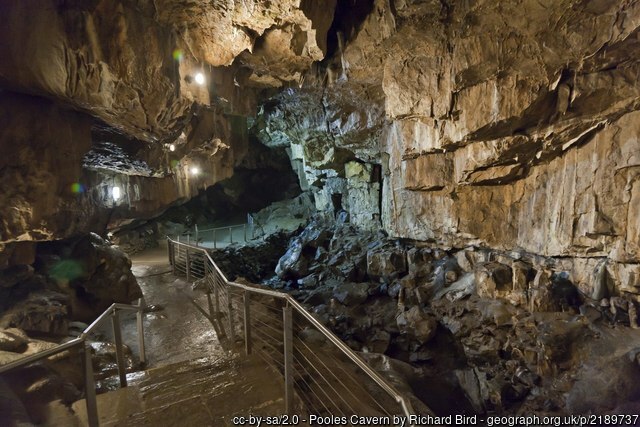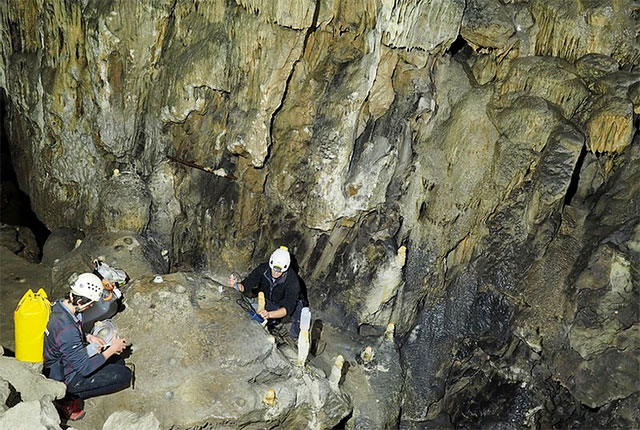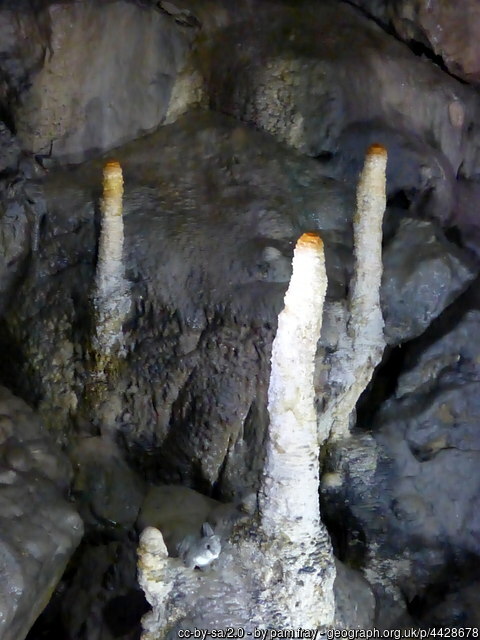Phosphorus in caves: a new methodological development being pioneered at Poole’s Cavern with the help of BGS
Alistair Morgan is exploring how phosphorous enters cave systems and if stalagmites could be used to unravel past temperatures.
30/09/2021 By BGS Press
As an MRes student at Lancaster University, my dissertation is looking at the phosphorus cycle within caves, especially using the oxygen isotope signature of phosphate (PO4) to understand phosphorus cycling and its use as a palaeotemperature proxy.
Water in caves
Water that enters caves has travelled from the ocean, evaporated and precipitated as rain, moved through rivers and soils before percolating into the cave environment. Along the way, this water picks up dissolved nutrients including carbon (C), phosphorus (P) and nitrogen (N). These offer a wealth of scientific information. Under certain conditions, cave drip waters form calcite features such as stalagmites, much like those found in Poole’s Cavern in Buxton, Derbyshire. Similar to tree rings and ice cores, stalagmites incorporate a wealth of environmental information as they grow, building a ‘nutrient record’ layer by layer over time.

Alistair Morgan and Dr Peter Wynn collecting water samples from Poole’s Cavern and measuring their chemistry ready for isotope analysis. BGS © UKRI.
Why study phosphate?
Phosphate (PO4) is a key component for microbiological function, including the formation of DNA. A metabolic process exists in many bacteria (pyrophosphatase hydrolysis) that swaps out oxygen within the PO4 molecule with oxygen from cave drip waters. This process is controlled by the temperature at which the reaction occurs. This means that we can potentially back-calculate the formation temperature using the PO4 oxygen isotope signature.
PO4 is naturally found in some stalagmites and, because these stalagmites take many years to grow, they could hold a record of temperature locked up in their PO4 that is tens of thousands of years old. However, this is all currently theory: we are still unsure exactly where the oxygen within PO4 is exchanged or how and, whilst we believe this should take place near to or within the cave, this novel approach needs testing. These are the questions on which my research will focus.

Stalagmites in Poole’s Cavern.
The research method
Water is being collected from stalagmite drip sites and dosed with PO4 within Poole’s Cavern. It is hoped that natural bacteria in the water will metabolise this PO4, ‘locking in’ the oxygen isotope signature as a factor of temperature. The water will then be dripped onto glass plates to precipitate calcite (mimicking natural cave stalagmite formation), analysed for stable isotope composition at BGS and compared to cave temperature. By conducting the experiment at different temperatures, it is thought that an equation can be formulated that maps temperature versus PO4 oxygen. If successful, a trend could be tracked through each layer that makes up the stalagmite, producing a temperature record though time without direct measurement.
Personally, I hope this experience will add significantly to the field of palaeoclimate research in caves and put me in better stead for a PhD studentship within the cave science field.
About the author
Alistair Morgan is a masters by research (MRes) student at Lancaster University. His research is focused on understanding how phosphorous enters cave systems and if, as it is incorporated into stalagmites, it could be used to unravel past temperatures.



